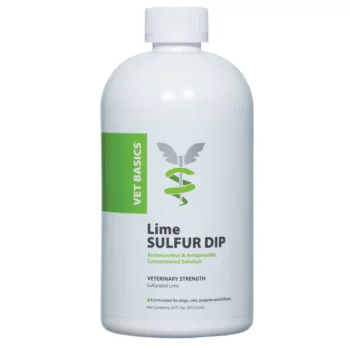A friend asked me to supply information on how to treat scabies in cats. It seems his cat has become infected, and he needs to know the best way to deal with the problem. Hopefully, this information will help.
First of all, what is scabies? It’s a colloquial term used to describe any skin condition caused by mites in the sarcoptiform family. In a feline, it is also called notoedric mange, and its source is the feline mite, Notoedres cati. It is closely related to sarcoptic mange mites in dogs.
This skin disease in cats can include intense itching resulting in scabs and scales. These begin on the ear tips, spread to the face, and if untreated, can eventually cover the body. This mange results in a large inflammatory response in the skin, causing intense itching.
What Causes Feline Scabies?

The cause of feline scabies is a mite called Notedres cati, quite similar to sarcoptic mange mites in a dog. In fact, if a cat lives in the same house with a dog with scabies, the cat can become infected. The possibility also exists that the mites can be transmitted to the human caregiver.
Because the condition is so contageous, the infected cat should be isolated to prevent the mites from spreading to other pets in the household. Wear latex gloves when handling the cat and be sure to wash all bedding, blankets, food bowls, collars and toys regularly.
Importance Of Vet Examination
Even if you plan to treat your cat with home remedies, it becomes essential that you first take your cat to the veterinarian. Confirm that you indeed deal with feline scabies. If you wish to try home remedies, check with the vet first to make sure you use an acceptable remedy.
One reason for the importance of a vet exam is to determine for sure that the cat has feline or canine scabies. If a cat becomes infected with sarcoptic mange (common in dogs) it has a poorer prognosis, especially if it has a depressed immune system. Then treatment by the vet becomes vital.
If detected early and you provide effective treatment, the condition is treatable and curable. Though not as common in cats as in dogs, scabies can become a miserable problem for kitty.
What Are The Symptoms Of A Cat With Scabies?

Symptoms could include any of the following:
- Itching; intense burning
- The cat bites and scratches itself
- Skin irritation and inflammation
- Depression and anxiety
- Weight loss
- Loss of patches of fur
- Unpleasant odor on skin
- Scabs appearing
How Is It Diagnosed?
Common procedure includes taking a skin sample. Your vet will scrape the skin of the affected areas and look at this sample under the microscope. The vet will make sure that the patchy hair loss and intense itchiness, or pruritus, are due to scabies and not ringworm, which calls for a different form of treatment.
Methods Of Treatment
First, you should never use a product labeled for dogs on cats, as the concentration and dosage prove very different, and could have serious side effects. Always ask your vet before applying any medication to your cat.
Treatments might include topical, injectable, and oral medications, under direction of your vet. Some examples include Bravecto, Revolution Plus, Revolution, Ivermectin, and Advantage Multi. The product must be labeled for cats. Confirm the proper dose with the vet for kitty’s age and weight.
If the cat has severe symptoms of itching or inflammation, the vet may prescribe additional medications such as cortisone and antibiotics.
Treatments Might Include The Following
Injectable Insecticides: Your vet might administer an injection of ivermectin every two weeks, under kitty’s skin. Such treatments generally eliminate an infestation.
Doramectin, administered under the skin, only requires a single injection. Your vet will administer it subcutaneously.
Topical Medications: Selamectin as a topical medication can be given every two weeks, for three treatments. This one goes under the skin between your kitty’s shoulder blaces.

Lime Sulfur Dips: To use this method, dip the cat weekly for up to 4-i weeks. Two negative skin tests will confirm the solution. Though safe and effective, they do not please the cat, who will most likely not enjoy being dipped.
Be advised that this product smells bad and can temporarily stain kitty’s fur. It can also stain you and your bath towels. Be sure to wear gloves.
Use a cone on kitty’s head so he cannot lick the product.
Treat all pets in your home to prevent infestation.
Glucocorticoid Medications: Your vet may choose to give your cat an injection of a glucocorticoid or steroid medicine. Though it won’t kill the mites, it does help reduce the itchiness.
Antibiotics: Again, these will not kill the mites, and not all cats will need them. If necessary, they should treat any secondary bacterial infections.
Treatment Options Not Approved, But Perhaps Effective
Isoxazoline flea control products such as Bravecto and Revolution Plus have not received approval for treatment of scabies in cats because the rarity of the condition, a single dose is effective.

Selamectin (Revolution) receives approval for use in dogs with sarcoptic mange; though not approved for feline use because of the condition’s rarity, it ranks as an effective treatment for cat scabies.
Moxidectin (Advantage Multi) also ranks as effective, but has not been approved.
Consult with your vet if you wish to try one of these.
How Long Until Recovery?
The response to scabies treatment will not happen overnight, but generally takes a few weeks. The time for recovery depends on the medication your vet recommends and how many animals are affected.
Remember, all cats and dogs in contact with your pet should be treated. Though humans can also contract scabies from pets, because they don’t represent the primary host, the problem’s severity is curtailed.
How To Prevent Scabies In Your Cat
An indoor cat is less likely to come into contact with scabies. However, it could still happen. We might even be the one to carry the nasty critter inside.
If you travel with your kitty or get the cat groomed regularly, make sure to do so at a facility with excellent hygiene plus disinfectant planning in place.
Wash or replace all bedding, beds, toys, harnesses, collars, and anything else that the cat sleeps on. Use a dilute bleach solution, which consists of one ounce of bleach mixed in one gallon of water. Prevent or minimize contact between kitty and stray cats or wild foxes.
What To Do If You Can’t Reach A Vet Immediately
Here are some home remedies you can try while you are waiting to reach your vet:
ESSENTIAL OILS
Though essential oils will not completely eliminate scabies mites, they can serve to soothe irritation. Their strong odor also acts as a repellent. Apply essential oils of olive, almond or lavender to the affected areas, gently massaging them in circular motions.
It’s okay to mix these different oils to create a stronger effect. One of the most effective of these is almond oil with vitamin E extract. Though you may find this one difficult to locate, you can simply break a vitamin E capsule into some almond oil and mix together. Keep it at room temperature.
Apply every two days for at least a week. This treatment will help get rid of the mites and also help heal the skin. Apply with a medicine dropper but don’t overdo.
SULPHUR SOAP
Sulpher, a chemical element, has antifungal and antibacterial properties. Bathing your cat with sulphur soap makes another effective home treatment. It will help stop the mites from spreading. This soap can also work on humans with the condition — just don’t share the bar of soap.
Inexpensive, it can be found in beauty or drug stores. It’s great for you and your cat — just make sure to use care when washing around the ears, eyes and mouth.
BORIC ACID
Boric acid can help bring skin back to top health. It also has useful antiseptic properties. Use a diluted boric acid solution to clean affected areas. It works well for cleaning sensitive areas such as the ear. Use at least once a week.
CORN OIL
A much cheaper solution than essential oils, it still represents an effective home remedy. It attacks and essentially drowns those nasty mites. Use it for 15 days, massaging the affected areas. Don’t miss any applications.
WHITE VINEGAR
So useful in so many ways, white vinegar can prove effective in killing mites and insects around the ears of a cat with scabies. Find it helpful as well for cleaning the remains of infection and impurities. Mix the vinegar with a little water and use in a dropper to apply to affected areas.
Warning: Never apply directly on open wounds, as it can cause severe irritation.
Conclusion
Hopefully you will find some helpful information in this post. Remember: Consult a veterinarian first to make sure you have a proper diagnosis. Do not let scabies go untreated, as it will simply get worse.
Remember that scabies is highly contagious. Keep your cat isolated from other pets until the mites are gone. Wash all items the cat uses thoroughly. Choose an effective treatment and use it consistently.
References I used for this post:
cats.com/scabies-in-cats firstvet.com/us/articles/notoedric-mange-scabies-in-cats petmd.com/cat/conditions/skin/scabies-in-cats animalwised.com/home-treatment-for-scabies-in-cats-2543.html

